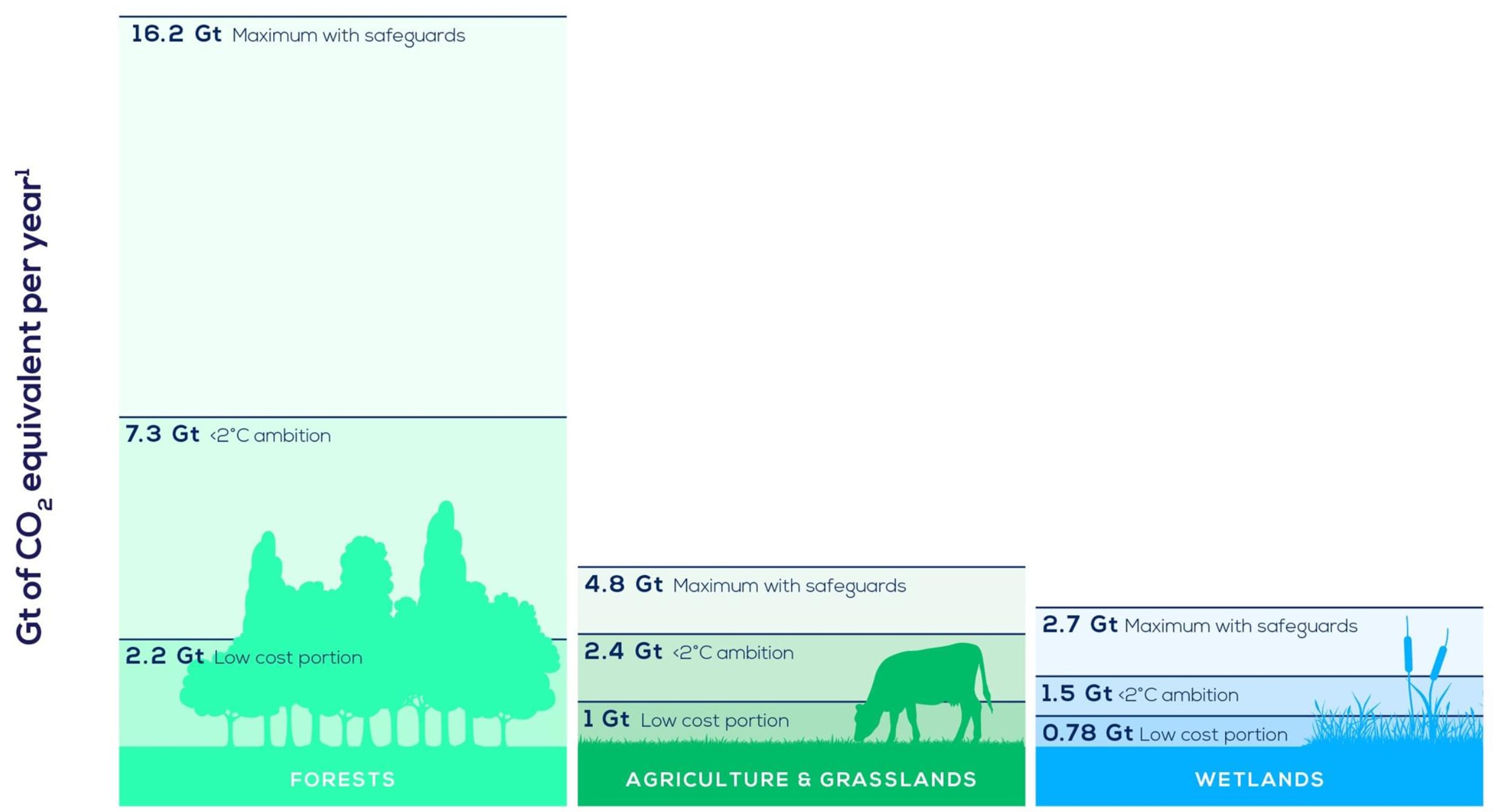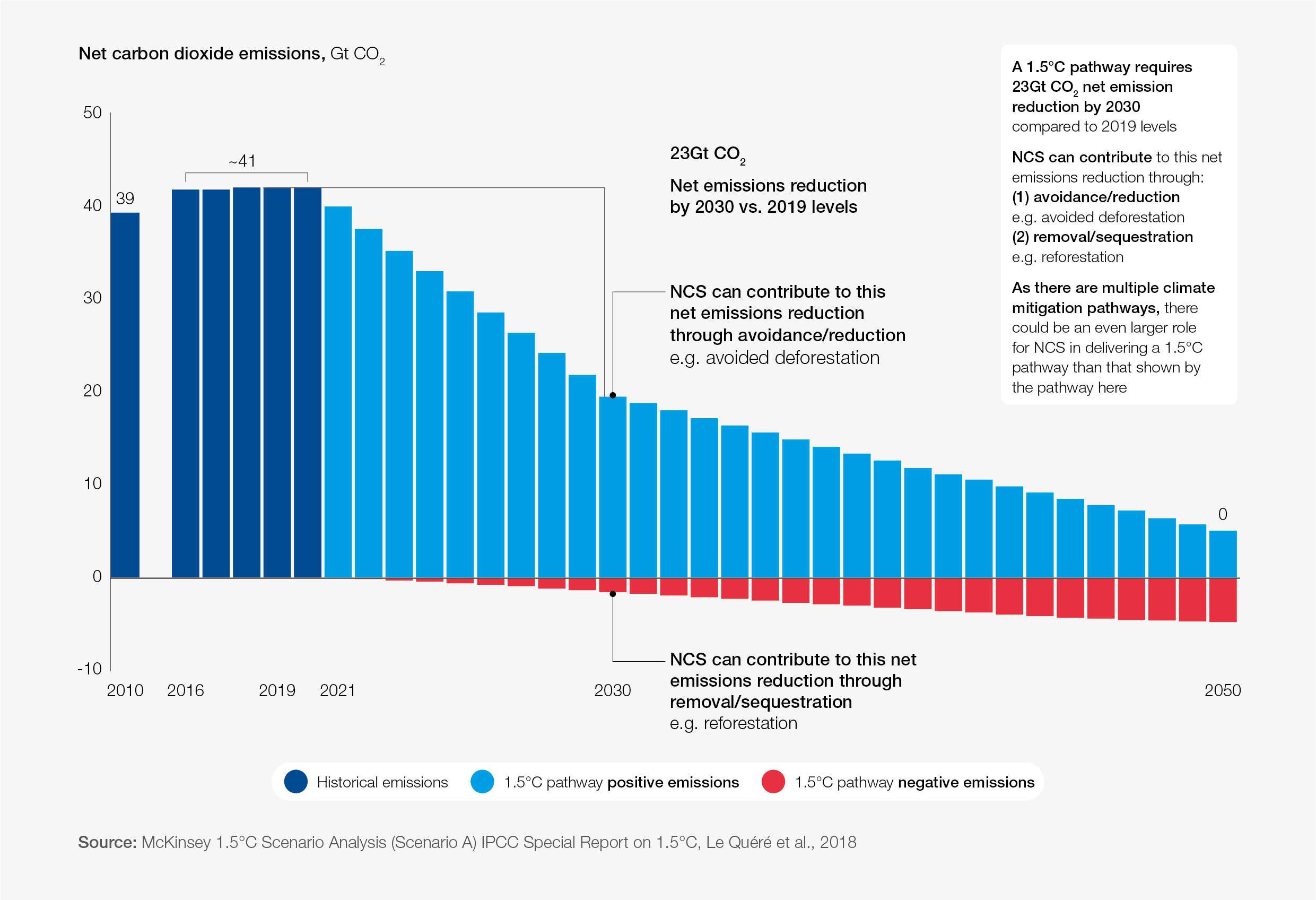5 critical incentives that could protect nature and the climate

Governments must prioritise high quality solutions to protect nature Image: Unsplash.

Get involved with our crowdsourced digital platform to deliver impact at scale
Stay up to date:
SDG 13: Climate Action
Listen to the article
- Transitioning to a nature-positive economy could generate annual business opportunities worth over $10 trillion by 2030.
- Momentum is building for companies to mitigate their climate and nature impacts and invest in nature-based solutions.
- We need policies and incentives from governments to enable the scaling up of efforts across sectors to build a net-zero, nature-positive future.
With more than half of the world’s GDP at risk from nature loss, protecting nature is an economic imperative. According to the World Economic Forum's Global Risks Report 2021, environment-related risks are the biggest challenge facing humanity, and natural disasters caused by human ecosystem disruption and climate change cost more than $300 billion a year.
While the risks of inaction are massive, we know that transitioning to a nature-positive economy could generate annual business opportunities worth over $10 trillion and create 395 million jobs by 2030. And momentum is building for companies to mitigate their climate and nature impacts, and invest in nature-based solutions which serve nature, climate, and societal goals.
But securing an equitable, net-zero, nature-positive future requires rapid scaling of efforts across sectors and value chains, and this relies on coherent policies and incentives from governments.
Policies and incentives that build resilience
Starting at COP26, business and finance need world leaders to shape ambitious, integrated policies and incentives that transform our economic and financial systems. Here are five things that are critical for change.
1. Put nature and climate action at the heart of the COVID-19 recovery. Only 10% of the $17 trillion global bailout has focused on cutting emissions and restoring nature.
To build stronger, more resilient economies with strong social benefit, we need to avoid a return to business as usual. Governments should align public finance with the Paris Agreement and the Sustainable Development Goals (SDGs). They could, for example, create new financial instruments such as “nature performance bonds” to reschedule debt for climate and nature goals, and catalyze private sector investment in renewable energy, deforestation- and conversion-free supply chains, and nature-based solutions.
2. Embed nature and climate in decision-making. We need to account for natural capital alongside physical, financial, and human capital, standardise climate- and nature-related risk disclosure, and look beyond short-term profit to shift global financial flows and business models toward nature-based solutions and net-zero investments.
Governments should move beyond using just GDP as an indicator of economic success, and also adopt more inclusive approaches that measure well-being and prosperity across generations. They could also implement mandatory disclosure regimes based on recommendations from the Task Force on Climate-related Financial Disclosures (TCFD) - and in time, the sister Taskforce on Nature-related Financial Disclosures (TNFD) - so that financial institutions and companies develop a shared accountability system for the global commons which accelerates investment in a net-zero, nature-positive economy.
3. Unlock financing. We must invest in the change we want to see by eliminating environmentally harmful subsidies, and by increasing investment in net-zero, nature-positive action. Reversing nature loss will cost $700 billion a year, which is less than 1% of global GDP, and just a fraction of the $5.2 trillion spent annually on subsidising fossil fuels.
Developed countries must meet their annual $100 billion public climate finance commitment using critical grant capital and development finance to trigger the scale of private investment required to support developing economies transition to net zero. Crucially, at least half of this public funding needs to support climate adaptation, helping vulnerable countries respond and deal with loss and damage. Currently, only 10% of climate finance reaches local actors in developing countries that already need $70 billion a year to cover adaptation costs which will rise to $140 billion–$300 billion in 2030.
4. Invest in nature-based solutions. Public and private investment in nature-based solutions can accelerate decarbonisation, and benefit people and nature.
Governments must prioritise high quality nature-based solutions for both climate change mitigation and adaptation in Nationally Determined Contributions (NDCs) to the Paris Agreement, and prefer green solutions in meeting future infrastructure needs. With 75% of the infrastructure we need by 2050 yet to be built, there is an enormous opportunity to develop “hybrid” infrastructure that combines natural and built systems in ways that allow people and the planet to thrive. Healthy mangroves and coral reefs, for example, capture carbon and can be 2-5 times more cost-effective than engineered structures in preventing coastal flooding.
5. Align policies for action. Ensuring coherence across international conventions and national policies – on agriculture, forestry, and environment, finance, development, and transport – can facilitate private-sector action and nature-positive approaches, and accelerate delivery on the SDGs.
Governments must set bold targets and clear timelines, and redirect subsidies towards green solutions in order to give companies the clarity and confidence they need to strengthen and enhance integrated nature and climate action. Governments should integrate NDCs with plans and strategies serving the Convention on Biological Diversity, the Convention to Combat Desertification, and the SDGs to maximise opportunities and ensure a just transition.
What is the World Economic Forum doing on natural climate solutions?
Looking ahead
Over 1,000 companies have already committed to setting science-based emissions reductions targets in line with a global 1.5°C climate pathway, and many have signed up to develop and implement science-based targets for nature.
Not only do such commitments give investors confidence but they can also be leveraged for greater impact. Building on the ambition to become circular and have a net-positive impact on both climate and biodiversity, H&M Group, for example, has used its sustainability commitments to issue a €500 million Sustainability-Linked Bond to fund investment in recycling and climate solutions.
Together with BNP Paribas, CEMEX, International Paper, Jayanti, Mahindra, Solvay, Suzano, and Unilever, H&M Group’s work is featured in a new set of case studies, Business Action on Climate & Nature. These efforts show the diversity of challenge and opportunity across different companies and sectors, and the commonality of purpose and intent.
From mapping value chain impacts, putting an internal price on carbon and ecosystems, and piloting bold nature-based solutions, to improving transparency and disclosure, engaging in pre-competitive collaboration, investing in business-model transformation, and calling for ambitious policy solutions, these companies are seeking to scale impact and accelerate change.
Yet much still remains to be done, and voluntary and individual company action alone is not enough. Sectoral transformation requires collective action and regulation that drives widespread reform. Recent weeks have seen encouraging moves from world leaders to reverse nature loss this decade. Building on commitments made in Glasgow, business and governments must together seize the moment to tackle nature loss and climate change. It is our last, best chance.
Don't miss any update on this topic
Create a free account and access your personalized content collection with our latest publications and analyses.
License and Republishing
World Economic Forum articles may be republished in accordance with the Creative Commons Attribution-NonCommercial-NoDerivatives 4.0 International Public License, and in accordance with our Terms of Use.
The views expressed in this article are those of the author alone and not the World Economic Forum.
Related topics:
The Agenda Weekly
A weekly update of the most important issues driving the global agenda
You can unsubscribe at any time using the link in our emails. For more details, review our privacy policy.
More on Climate ActionSee all
Carlos Correa
April 22, 2024
Shyam Bishen and Annika Green
April 22, 2024
Libby George
April 19, 2024
Mette Asmussen and Takahiro Furusaki
April 18, 2024
Laia Barbarà and Ameya Hadap
April 17, 2024








